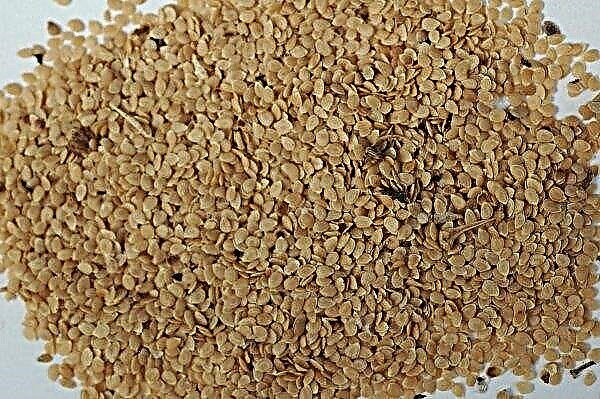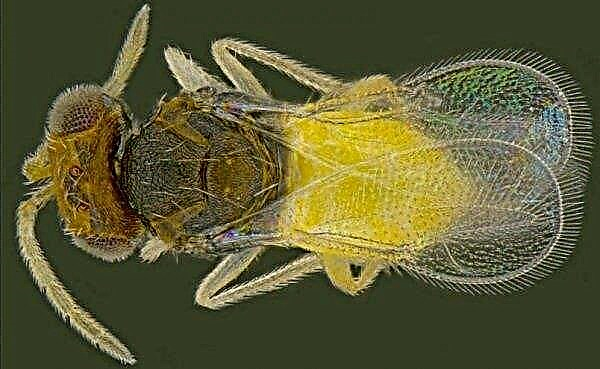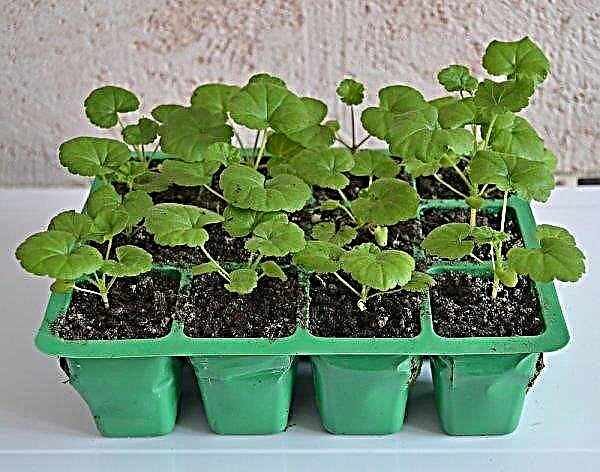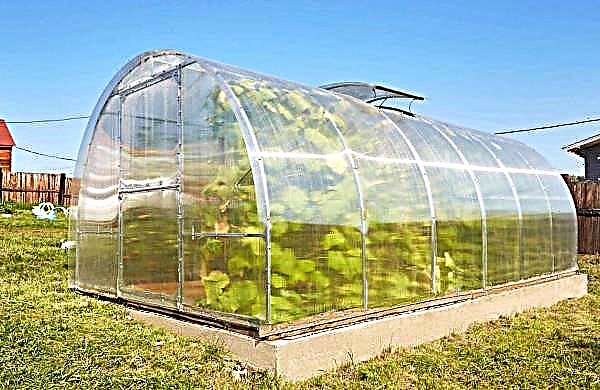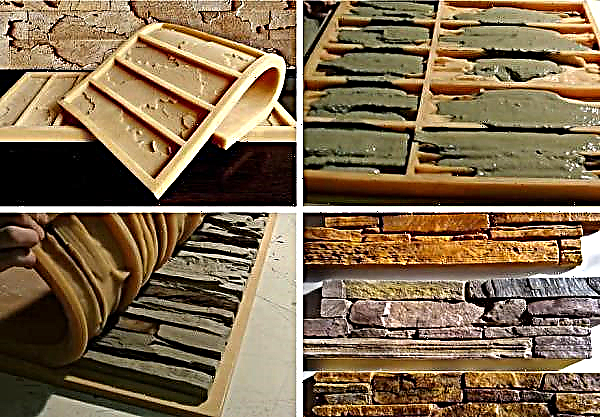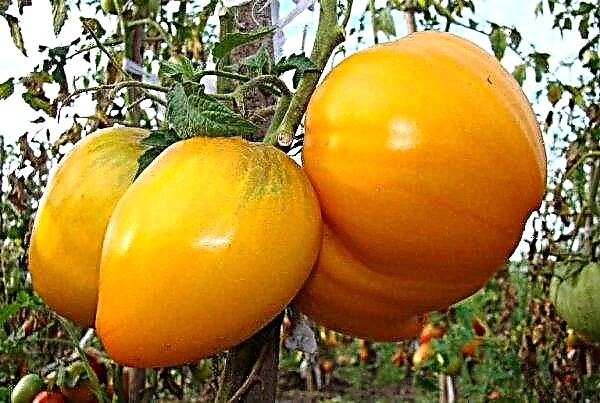Honey separator refers to those necessary devices for the operation of an apiary, without which a medium-sized farm cannot do. Different types of devices of this kind are widely used by beekeepers in the process of obtaining honey and have both general operating mechanisms and distinctive features, including: dimensions, types of drives, types of cartridges, and so on. Let us consider below the Granovsky honey extract, which has become widespread among beekeepers in different regions.
Functions, advantages and disadvantages of the Granovsky honey extract
The Granovsky honey separator is designed to work with hives of the Dadan design and can function in manual mode and on electricity. Having high quality, such a device can be used for pumping honey on an industrial scale and in small apiaries.
- Among the advantages of honey extracts of this design, beekeepers note the following:
- All models of the Granovsky honey extractor are compact and easy to transport by car. The main dimensions of the device are determined by the type, as well as the required number of frames.
- The low weight of the honey extract, which is achieved by using thin stainless metal, which makes it easy to carry the device in your hands.
- High rates of pumping honey.
- The use of an electric drive makes it possible for the apparatus to operate continuously, up to the complete release of frames from honey.
- Ease of control and maintenance of the device - at the end of the work you only need to wash the honey extractor. In case of breakdowns that are not related to electronics, it is not necessary to contact for repair, as they are easily fixed by yourself.
- Low cost of the device.
Important! During the operation of the Granovsky honey separator, fresh honeycombs do not wrinkle and do not deteriorate.
- Beekeepers who constantly use the honey extract of this design in their work note several of its main disadvantages:
- The difficulty of securing a heavy metal crane on a case made of thin stainless steel, which is easy to deform during the application of forces.
- The lack of reliable fixation of the legs - from constant vibrations, they become loose and cause a crash during operation.
- In the process of filling the tank with honey, the speed of rotation of the frames is significantly reduced, which leads to a drop in productivity.
However, the disadvantages can be easily eliminated. For example, use a light plastic tap instead of a metal one, fix the legs before each pumping and do not overload the tank with honey.
Characteristic and principles of work
In the manufacture of the housing and accessories, the main material is stainless steel. Cassettes located on the rotor rotate easily and freely under the influence of springs. Rotor rotation is provided by bearings.
Depending on the selected operating mode, the operating principle of the apparatus changes:
- in manual mode, the rotor rotation stops as soon as the frame is pumped out on one side, after which the cartridges are rotated, and then pumping continues under the conditions of rotor rotation in the opposite direction;
- in the automatic mode, the rotor continues to pump out the honey.

At the same time, the beekeeper has the opportunity to independently select the operating mode, set the duration of operation and the sound alert.
Views
Depending on the requirements of the apiary and its spaciousness, there are several modifications of the honey separator. Despite the features of each design, all of them have common advantages, such as:
- high speed performance;
- compactness and reliable electric drive, which ensures long and fruitful operation of the devices.
2- and 3-frame
They are characterized by compactness, small dimensions and low weight of the device. Honey extractors of this version are equipped with non-returnable cartridges and are intended, first of all, for owners of small apiaries or beginner amateurs-beekeepers who own no more than 10 bee families.

4-frame
Devices of this class are equipped with electric drives and reversible cartridges. The components include a control panel. The main purpose of this device is to service semi-professional apiaries (also suitable for beginner beekeepers), accommodating no more than 30-40 bee families.
6- and 8-frame
This modification of the honey extractor is equipped with wrapped cartridges and an electric motor, as well as the possibility of automated pumping and a large pocket into which honey is collected. The 6- and 8-frame honey extractors are suitable for large professional apiaries that accommodate more than 100 bee families.
Radial
The operation of the radial honey extractor is provided electronically, the number of cartridges can vary from 6 to 8 pieces. Stainless steel is also used in the manufacturing process of the case and work elements, while steel alloy and polymer spraying are used as the main material of the rotating drum.
The design of the honey extractor is designed in such a way that sticking of the frames with honey is excluded, and the spring ensures the simultaneous unfolding of all cartridges. The device can operate in two modes - automatic, in which the device stops working after pumping out honey on both sides of the frames, and manual, which provides pumping out on only one side of the cartridges - to continue working, they need to be turned over and the device started again.
Tangential
The honey extractor of this modification is essentially a hybrid of several types of devices - due to the location of the cartridges at an angle of almost 35 °, the period until the honey is completely pumped out is significantly reduced.
All main and auxiliary parts of the device are made of high quality stainless steel. The kit includes a PEM-180M drive, a transparent double-leaf cover, pulleys, belts and a set of fasteners. Each tangential honey extractor also has a passport.
In addition to high productivity, devices of this class are distinguished by a fully automated pumping process, ease of operation using the control panel and a quick drain of honey through a stainless steel gate valve.Did you know? Honey has the ability to remove alcohol from the body, and therefore it is recommended to use the product for food to treat a hangover.
Honey separators on the RTH frame
Devices under the “Ruth” framework have several modifications that differ in the presence of an electric drive or its absence. Otherwise, the characteristics of the honey separators are similar: high performance, the use of stainless steel in the manufacture of the body and the main parts, the ability to quickly drain due to the wide valve-gate valve and the ease of control via the remote control.
Universal honey extractor
Honey separators of this type have the ability to function in two modes:
- hordial - in the rotor are installed cassettes on the Dadan frame in the amount of 6 pcs., In each of which one Dadan frame (300 mm) or one RTH frame (230 mm), or two half-frames (145 mm) can be placed;
- radial - the frames are installed in the slots, and it is possible to pump out 36 half-frames (with dimensions - 435 × 145 mm), or 36 frames of the “RTH” (435 × 230 mm), or 18 frames of Dadan (435 × 300 mm).
Important! Due to the tight connection of the honey separator elements, leaks in the structure are excluded.
In addition to the advantages that all Granovsky honey separators have (high performance, ease of operation, smooth acceleration of the rotor and quick drain of honey), this modification compares favorably with the possibility of fixation in the tilted position of the device, which ensures complete drainage of honey, as well as the height adjustment of the legs.
Alpine
The view is designed for 24 alpine frames, and in its rotor can fit 3 cassettes of 8 frames. The tank of the device, as well as the rotor and cassettes are made of high-quality stainless steel. The equipment includes a wide valve-gate valve, reinforced legs, as well as an electric drive PEM-90M (from 12 V). The honey separator is characterized by smooth acceleration of the rotor and rapid braking.
"Smart" PEM-90U electric drive
Experienced beekeepers know that the optimal honey pumping cycle in manual mode, which will avoid breaking the frame, consists of three main stages:
- About half the honey is pumped out of the framework at a low speed.
- The frames are turned over and are pumped out to the end at high speed.
- Another turn of the frames and a complete pumping out of honey “dry”.
When designing the PEM-90U drive, this principle of operation was adhered to. The beekeeper, like using any other electric drive, sets two main parameters on the remote control: rotation time and rotation speed. For example, take 2 minutes. and 200 vol. The work of PEM-90U will consist of three main stages:
The work of PEM-90U will consist of three main stages:
- first cycle - the rotation time is half a minute, and the speed is 50% of the specified initial speed (100 vol.);
- second cycle - pumping is carried out according to the specified parameters;
- third cycle - 1.5 minutes and rotation from 100 to 200 vol.
Thus, a complete simulation of manual pumping occurs, but with less labor and higher speed - this is the principle that allows you to save all the frames from damage.
Did you know? The most expensive honey is produced in Israel — the cost of 1 kg is about $ 1,500.
What should I look for when buying a honey extractor?
Getting to the selection and purchase of a honey extractor, you must familiarize yourself not only with information about the modifications of the device, but also prepare a list of questions, which it is desirable to ask the seller:
Important! The quality of stainless steel is usually checked by a magnet. — it does not stick to a food stainless steel.
- It is worth deciding on the type of honey extractor, which will be the most suitable option for a specific apiary: a small beekeeping (the number of families is up to 10) is suitable for a 2- or 3-frame honey extractor, an average apiary (from 10 to 20 bee families) needs a 3- or 4-frame apparatus . The main thing you should know is the presence of an electric drive in the device, which provides automatic operation.
- Often, sellers say that the honey extractor is made of stainless steel, but in fact it turns out that this material is used only in the manufacture of the tank, and in the manufacture of the remaining parts - cassettes and the rotor - painted metal was used.
- If you have an electric drive, you should ask the seller who is its manufacturer. When designing and assembling devices, many manufacturers install third-party drives, which is not always good for the buyer. Firstly, the question arises with warranty service, and secondly, in connection with the appreciation of the dollar, the price can be prohibitive. It is also worth asking about the electric drive program, namely its ability to work in automatic mode, the presence of three pumping cycles and the possibility of use in other honey separators.
- You should pay attention to the usability of the selected model and its additional functionality. Ask the seller the following points: whether there is a stand that makes it easy to drain honey into prepared containers; the mechanism of the final discharge of honey, which allows you to fix the installation in an inclined position; what is the volume of a honey pocket. The comfort and quality of your work in the apiary will consist of these little things.
- It is necessary to inquire about the configuration of the selected model - for example, the presence of a lid that protects honey from dust and is an essential element of safety, as well as the type of crane. Despite the convictions of the seller, who will tell you that the model does not dust at work, and therefore does not require a lid, you should not agree. It is also not recommended to purchase a device with a ball valve, which drains honey extremely slowly.
- When resorting to the services of a certain company, you should ask in advance about its reputation among beekeepers. However, one must also be vigilant - many unscrupulous manufacturers often resort to "black PR", publishing negative comments about competitors on behalf of beekeepers.
Video: Overview of the Granovsky honey extract
Is it possible to make Granovsky’s honey separator do it yourself?
Keeping an apiary requires a honey pumping device, but not every financial situation can afford the purchase of this expensive equipment. In this case, the opportunity to independently collect the honey extract will come to the rescue and, first of all, you will need to determine the size of the device and draw up the correct drawing.
How to determine the size with self-manufacturing?
To determine the parameters, the size of the apiary and the number of hives to be placed should be taken into account. For a small bee farm, the best option would be to manufacture a 3- or 4-frame honey extractor - the size of the frames will become a determining factor in the overall size of the device.
The most suitable option for home use is an apparatus with a diameter of not more than 0.65 m - exceeding these sizes is justified only in a large economy, in which honey is considered commercially.
Blueprints
The implementation of the honey extract is simplified when using drawings. Below is a drawing with which you can easily assemble a home-made device.

DIY material selection
Proceeding to the independent collection of the honey extract, it is necessary to determine the main material of the device. Let us consider below suitable materials that can become the basis of the honey extract.
It must meet the following requirements:
- resistance to mechanical stress;
- the applicability of food interactions.
Important! In the construction, the use of galvanized parts is unacceptable, which, when reacting with honey, will significantly impair its quality.
Wooden
Honey extractor can be made of wood (except axle, bearings and pulley). An apparatus made of such a material is an octagonal drum, inside of which a rotor and frames rotate. It is located on legs, under such a device you can substitute any container for collecting honey. The type of wood for the device does not have special significance (except for the personal preferences of the beekeeper), however, 2 basic conditions must be met: the material should not be wet and there should be no resin .
- Among the advantages of using a tree are:
- ease of construction and, consequently, the absence of difficulties when moving;
- ease and high speed of disassembly, washing and assembly;
- high honey collection rate.
Aluminum
The advantages of using the material are the ease and simplicity of manufacturing the device - it does not require a long assembly, you just need to find the capacity of the required size (for example, a barrel, an aluminum pan or a cabinet from a washing machine).
Plywood
This material has all the advantages of wood, and the ease of plywood itself is also added. The only difficulty a beekeeper may encounter is how to fix the case. The solution will be small nails or glue.
Stainless steel
Stainless steel - one of the most popular solutions in the case of making a honey extract do it yourself.
- The use of this material has many advantages:
- accessibility of material - as a case, you can use the case of a washing machine, stainless steel sheets, which are easy to purchase in any hardware store;
- simplicity of operation of the device from stainless steel and long service life;
- high rates of speed and quality of pumping honey;
- ease of maintenance.

Making a drive for a home-made honey extract
Taking into account the labor inherent in manual operation, it is recommended to use a honey extractor with an electric drive.
For its manufacture at home, you will need:
- textolite circle 10 mm thick, which will act as a disk on the hub;
- any 90 W engine (for example, from a car stove) equipped with a grid that will prevent bees from getting inside;
- the relay from the washing machine - will act as a switch;
- a rheostat (you can use any shield) and a nichrome spiral - you will need to adjust the speed;
- metal bracket.

- An electric drive of such a plan has many advantages, including:
- the possibility of pumping heavy frames with honey;
- at a power of 90 W, the drive can operate from a car battery;
- admissibility of choosing a special mode, setting the time and revolutions;
- profitability.
Among the shortcomings can be noted the inability to use the engine in a horizontal position, as well as some difficulties in installing the framework of the store when using the radial mode.
Instrument Operation
Work with a homemade device consists of several steps:
- Using a special fork, honey is printed.
- The product is placed in cassettes.
- With the help of the handle that the apparatus is equipped with, rotation occurs.
- Centrifugal forces, having an effect on honey, move it from honeycombs to the tank.
- Through the tap in the bottom of the device, the honey enters the prepared containers.

The manufacturing process of a home-made honey extractor is not simple - this will require not only special schemes and drawings, but also a sufficient number of materials and auxiliary parts. However, having dealt with the nuances and having completed all the work, you will get a device that efficiently and quickly pumps out honey, which will become indispensable in beekeeping.
Reviews
If you just started beekeeping, it might make sense to find (sometimes give it for free) a used honey extractor. And read, decide what you would like. And as for Granovsky, I also have 8 and a frame for the frame. You can pump out the root and 2 store ones. More options. Serves the second year. After pumping out, a leg broke on welding. And sometimes the frames do not all flip over. You have to keep an eye on it all the time. But pumped out without special excesses. Hardly had time to print out the framework. Probably Lysonya is better, but also more expensive.
http://letok.info/forum//index.php?/topic/2193-%d0%bc%d0%b5%d0%b4%d0%be%d0%b3%d0%be%d0%bd%d0 % ba% d0% b0 / page__view__findpost__p__91688

